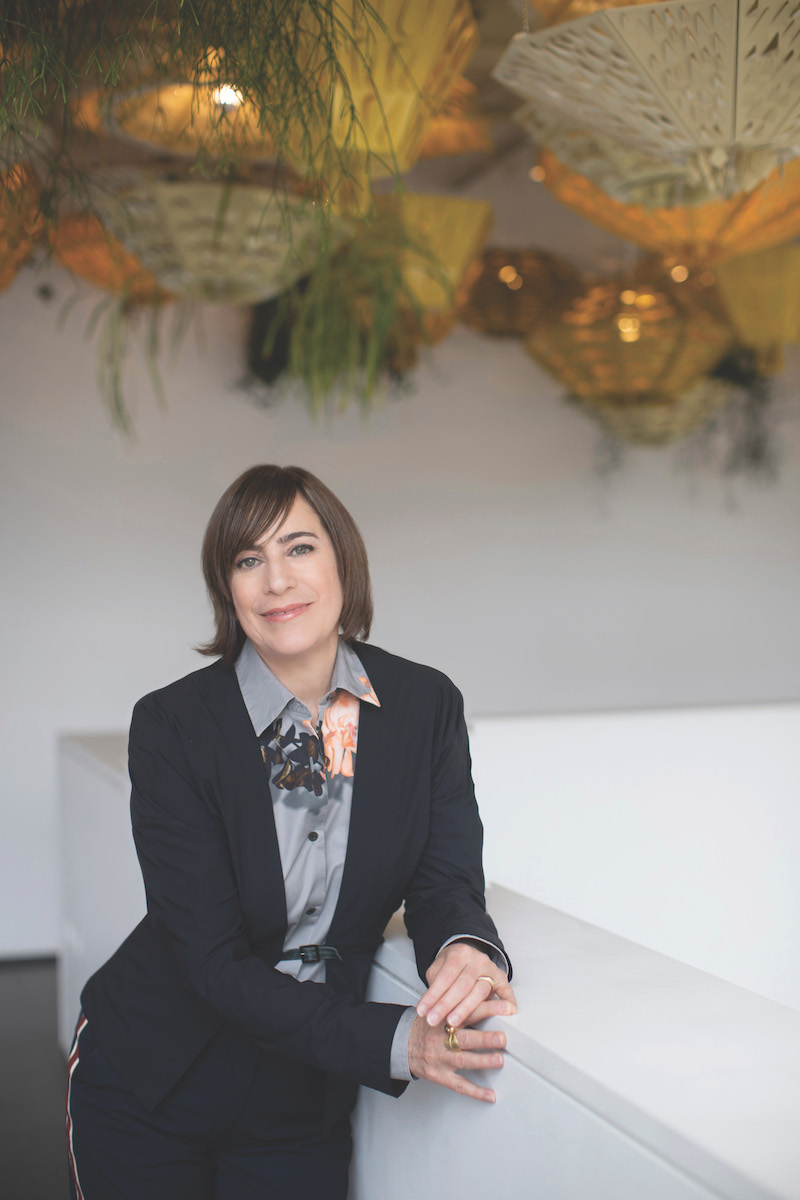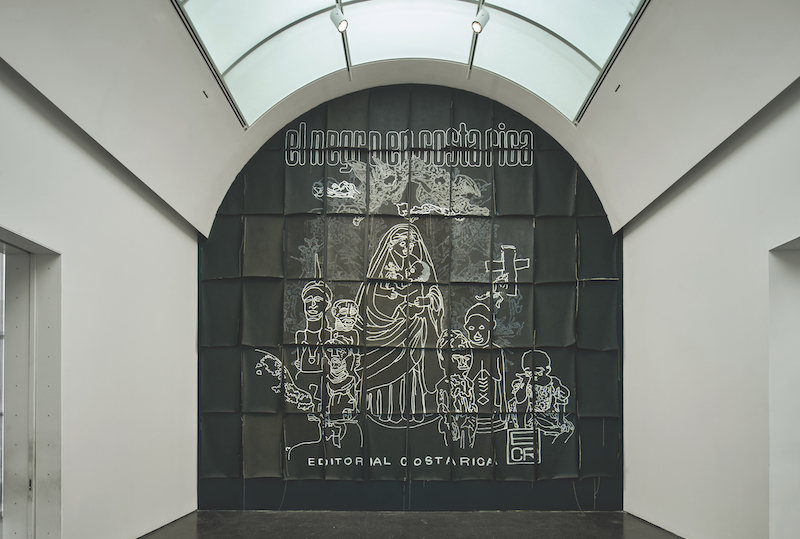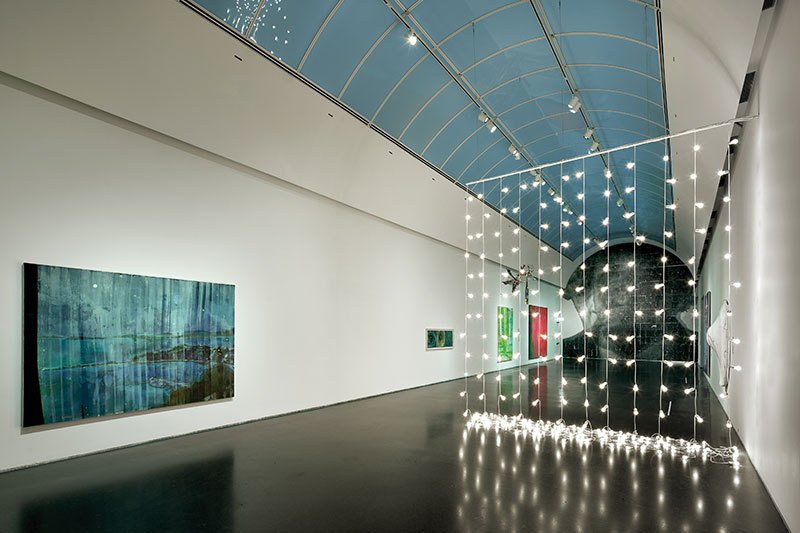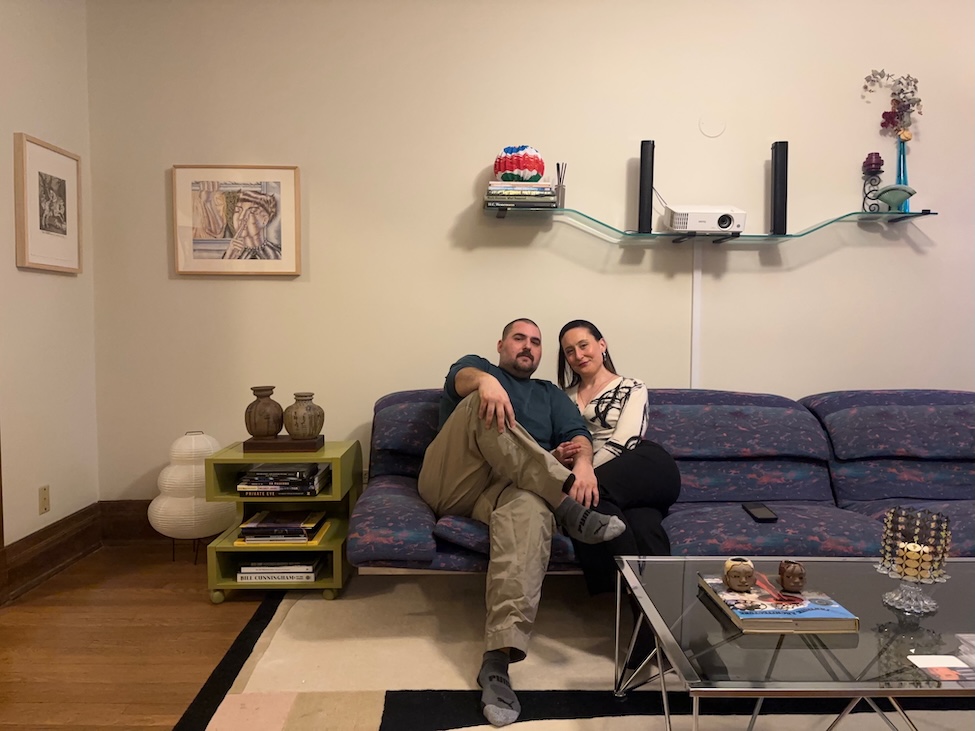MCA Director Madeleine Grynsztejn On Chicago as Flash Point and Flashlight


By ANNA DOBROWOLSKI
Madeleine Grynsztejn is a leader on a mission. Since starting her tenure at the Museum of Contemporary Art Chicago in 2008, Grynsztejn has been committed to presenting art ‘you don’t yet know you love.’
Today as she enters her 15th year as MCA director, she says she is ready to prove that contemporary art is entering a golden era, and Chicago is its crucible.
When the MCA’s doors were shut in 2020 due to the onset of the pandemic, the museum joined the mass migration to digital programming out of a commitment to stay connected to audiences locked out of physical institutions and stuck at home. The three years that followed left the world craving reconnection that Grynsztejn strongly believes can be facilitated not only through the art found in institutions, but also through the institution itself. Criticism that bubbled up in 2020 – from outside as well as within – was ultimately a catalyst for real change.
During a recent candid conversation, Grynsztejn tells us some of the most significant lessons she gleaned from steering the MCA through a pandemic amid local and global unrest, from how she listened to and genuinely responded to criticism while embracing collaborative opportunities. Each is a lesson she says will not be forgotten.
CGN: Where do you see the biggest shift between then (pre-pandemic) and now? Is it in the type of art on view, differences in programming and exhibition themes, or something else?
MG: The biggest shift has actually been consistency. Artists and audiences continue to care deeply about creating and presenting art. Not only can they enlighten our learnings about issues such as systemic racism, but they have also shown us how attuned they are to whether our back of the house is as ethical as the messages of the works of art on the walls and on our stage. Where there were differences, there were credibility gaps.
CGN: So artists acted as a voice of consciousness and a kind of auditor? What happened behind the scenes? It was important for the MCA to listen and respond.
MG: Much of our work since COVID has been very important but relatively invisible. We have intentionally put a DEI lens on our institution. We launched our first fully bilingual major exhibition, “Forecast Form: Art in the Caribbean Diaspora, 1990s–Today.” It’s what Chicago should do, especially since we have a population that is 18% Spanish-speaking.
What we do administratively and systemically is part of what it means to be a good contemporary art museum. It’s not just how we show up on the outside; we are only as good as our people.

CGN: At the time of writing, MCA’s staff is at 40% BIPOC, which is a 5% increase over the last year.
MG: On the public side, since 2020, nearly 70% of our collection acquisitions have been by women-identified or BIPOC artists. We have actually been 50% women-represented in all of our programs since 2015. We are part of this new wave and generation of feminism that is starting to finally be able to make permanent–not cosmetic–material differences, changes that are a part of our daily practices and will continue to be.
This is the same with many of the MCA’s changes implemented during the pandemic. [Artists] have become much more attuned to wanting to be with institutions that reflect the learnings that we have all taken in. They want to support those institutions that want to change internally as well as externally. That’s the answer.
CGN: You noted that the MCA is acquiring women-identified and BIPOC artists’ work at 7 times the rate of any other museum in the country (according to the Burns Halperin report). This is happening in Chicago. What drives you to continue being invested in this city?
MG: What I’ve always said about Chicago is that it is a flash point and a flashlight. Which means that it’s a leader, and it is incumbent upon us to set the terms by which a great contemporary museum is defined. Chicago is currently experiencing a Golden Age specifically for black art, on a par with the Harlem Renaissance of the 1920s. It’s also a Golden Age of what might be considered socially engaged art, which is one of the most important art movements since the 1990s. There is no other city that can boast the likes of Theaster Gates, the Rebuild Foundation, Emmanuel Pratt and the Sweet Water Foundation, Amanda Williams, Michael Rakowitz, Faheem Majeed and the Floating Museum, and so many others the world has noticed. There is no other city that can boast a community of artists at that level of excellence. This community lives at the intersection of art, architecture and design. We really celebrate that.
CGN: Borrowing your flashlight metaphor here, what is something you want to illuminate for visitors returning to the MCA?
A welcome. There is no single word to capture the past 36 months. I guess there was the overused ‘unprecedented’ but there’s not really a word for what we all have gone through and are still emerging from. We are now seeing people coming back together ‘post-COVID’, and it is the most beautiful, heartwarming and important thing.
The MCA wants to reward our community’s courageous return with wonder. Our offering is to first make you curious, then facilitate that understanding, which naturally leads to bridging differences, and that naturally leads to change. And when you ask me that question, it really comes down to: we want to be the place that catalyzes art. I think that’s when it becomes an act against the worst part of the last 36 months: the divisive black and white ideology structure we are actively against.
CGN: Looking back on 2022, for instance thinking back to Nick Cave and “Forothermore”, what were some of the challenges you faced then, even with some stunning programming? How did you overcome them?
MG: Well, I can speak to the challenge of maintaining pre-COVID level programming momentum and audience engagement. We continue to see the benefits of a museum that is as strong online as it is onsite, because we did learn that it clears economic, geographic and ability hurdles in ways that the physical museum space does not.
You always have to ask yourself, not only what extraordinary art offering will change people’s lives and hearts and minds, but what is an ethical way in which you execute that exhibition or program? Since COVID what we’ve learned is that it is an extraordinary, and much more welcome, way of working when you partner and collaborate with an institution on an exhibition like Nick Cave or a full day symposium in partnership with DEEM journal, a biannual print journal and online platform focused on design as social practice.

CGN: What have been some proud moments?
MG: Creating gorgeous exhibitions, like launching our first major bilingual exhibition with “Forecast Form” or making an extraordinary show by Chicago-based artist Nick Cave happen and see it travel to New York. Hosting an unbelievable performance festival called Chicago Performs. I’m also proud of how we do it – so often we do this in partnership with other organizations we are honored to work with and mutually elevate.
Our mindset has shifted very productively in the wake of the last 36 months. At the same time we have always been connected – as a contemporary art museum – to emergent thinking, doing and being.
Looking forward, our exhibition this summer is a retrospective of the great artist Gary Simmons curated by our Chief Curator René Morales and Assistant Curator Jadine Collingwood. It is gorgeous work and its subject matter focuses on those hidden histories, particularly around race, that permeate our culture and that we need to continue to talk about. The first survey show Simmons ever did as a young artist was at the MCA in the early ‘90s.
In August the MCA will open a show called “Entre Horizontes: Art and Activism Between Chicago and Puerto Rico” that examines the intersection between art and social justice movements between the Puerto Rican diaspora and Chicago.
CGN: It’s clear that no institution is an island. Ongoing public discussions about institutions call for critical review of the communities involved in their existence: Who can take part? Who is it serving? You’ve mentioned that some artists have recently returned to the MCA. They are actively a part of MCA’s history, present, and future. What can you tell us about the partnerships and collaborations?
MG: You’re so right. Another example I love is that the MCA gave Lorna Simpson her first survey show in 1992. Today she is one of our trustees, actively influencing the organizational direction of the museum.
We also did this wonderful exhibition with the DuSable Museum recently, a relationship that will continue. The MCA enters into such partnerships with humility. We try to always go about our work in the right way in Chicago, as a cultural and civic agent. Part of that responsibility is to remain internationally significant and cosmopolitan.
[For example, we recently] negotiated the gift of a historic collection of installation art from the 1990s to the present from the collection of Dimitris Daskalopoulos, which we are co-owning with the Guggenheim in NYC.
Obviously this is not accomplished alone. We are in a moment when I believe the MCA is having a huge impact locally, nationally and internationally. And it’s thanks to a magnificent alignment between staff and board that is committed to fully manifesting this museum on behalf of its artists and its public.
We are here to welcome every person that comes in the door and to learn with and from them. Chicago is a full partner in MCA’s growth, in heart and mind.
#






